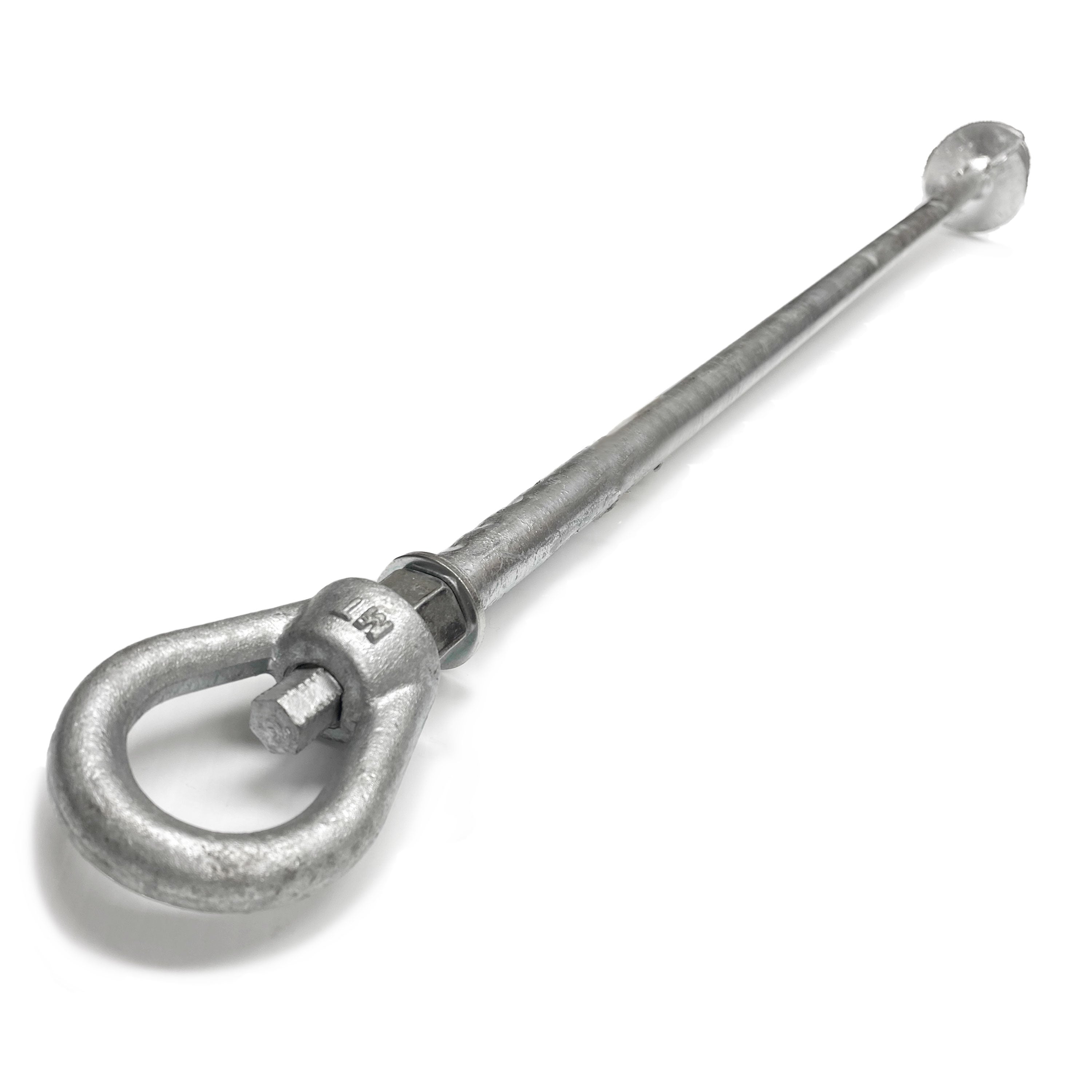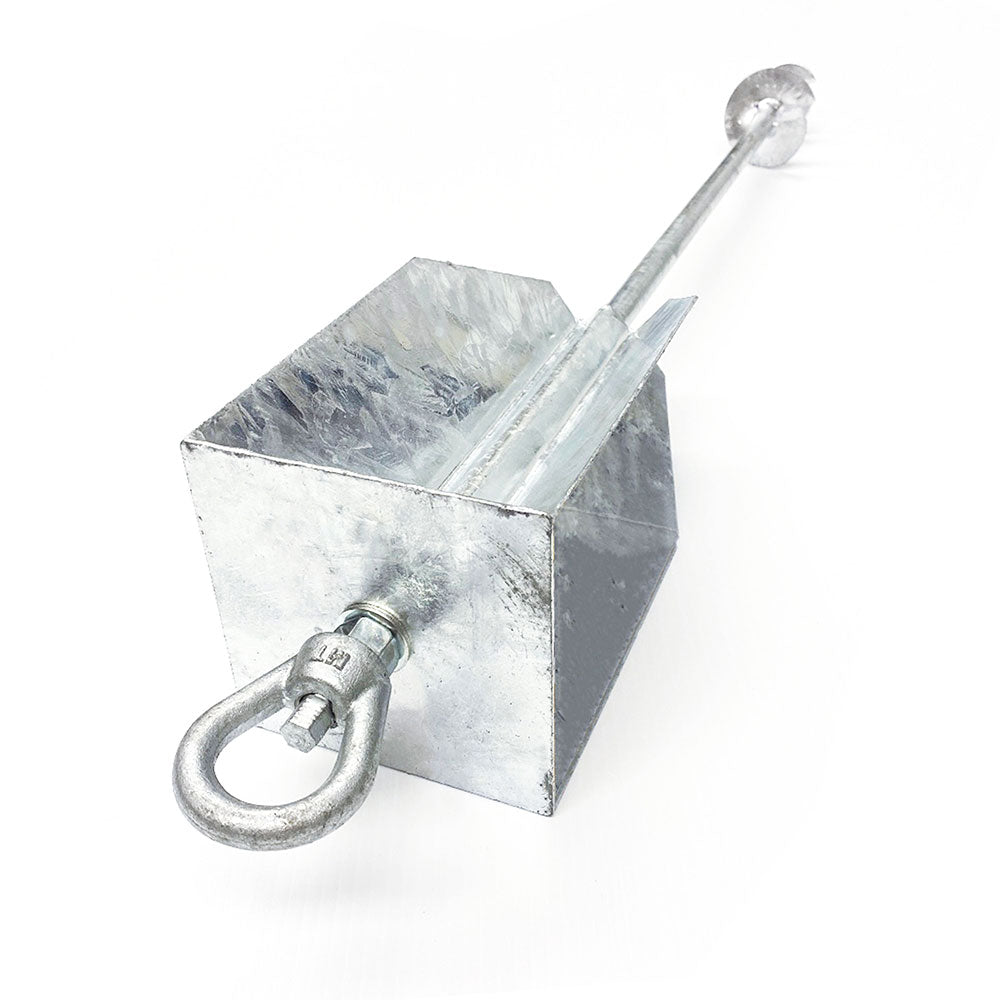New Advancements in Ground Anchor Design and Their Benefits
New Advancements in Ground Anchor Design and Their Benefits
Blog Article
Understand Why Ground Anchor Is Important for Security and Resilience
Ground supports are a vital part in construction, supplying critical assistance and security for various frameworks. Comprehending the various types and applications of ground supports can brighten their essential role in guaranteeing security and toughness.
Duty of Ground Anchors in Building And Construction
Ground supports play a critical function in building and construction by providing necessary support and stability to structures. These devices are designed to transfer loads from a structure to the ground, making sure that structures and various other frameworks stay safe and secure under numerous conditions. Ground anchors are particularly vital in situations where soil conditions are unsteady or where there is a danger of lateral movement, such as on slopes or near bodies of water.
The installation of ground anchors includes drilling right into the planet to reach stable dirt or bedrock, where the anchors can be firmly secured. This process not just enhances the architectural integrity of a task however also mitigates the dangers linked with soil disintegration and shifting. Additionally, ground supports can be employed in short-term structures, such as building websites, where they supply needed stabilization throughout the building procedure.
Ground anchors also add to the longevity and sturdiness of structures by decreasing the possibility of negotiation and failing. Ground Anchor. By effectively dispersing and managing tons, these essential elements are crucial in keeping security requirements and ensuring the dependability of various building and construction projects. In general, the significance of ground supports in building can not be overstated, as they are essential to effective engineering practices
Kinds Of Ground Supports


While various kinds of ground supports exist, each offers certain applications and problems within building and construction jobs. The most typical types consist of mechanical anchors, grouted anchors, and driven anchors.
Mechanical supports, such as expansion anchors, use a mechanical action to safeguard the support within the substrate - Ground Anchor. These are usually employed in light-weight applications, like securing components to stonework or concrete
Grouted supports, on the other hand, entail piercing a hole, placing a steel rod or wire, and after that filling up the annular space with cement. This method appropriates for high-load scenarios, offering enhanced security and resistance to vibrant forces usually located in hefty building and construction.
Driven anchors are generally installed by driving a steel rod or pipeline into the ground, making them suitable for momentary applications such as safeguarding scaffolding or formwork. They fast to mount and can be eliminated quickly when no more needed.
Various other specialized anchoring systems include helical supports, which are screw-like gadgets made use of in different dirt conditions, and deadman anchors, which rely upon the weight of a buried challenge offer security. Each type of ground anchor is made to meet particular engineering requirements, making sure safety and security and structural stability.
Benefits of Using Ground Supports
The benefits of using ground anchors in construction jobs are significant, enhancing both safety and security and architectural efficiency. Ground anchors offer important resistance against side pressures, such as dirt motion, wind lots, and seismic activity. This resistance helps preserve the stability of frameworks, preventing prospective failures that could result in expensive repair services or hazardous scenarios.
Additionally, ground supports assist in the reliable transfer of tons from structures to the surrounding dirt, guaranteeing a well balanced distribution of weight. This load transfer browse around here lowers the threat of shifting or settling, which can compromise the honesty of a building over time. By using ground supports, engineers can likewise develop more effective layouts, as they allow for slimmer structural aspects while maintaining safety requirements.
In addition, ground supports are functional and adaptable to various soil conditions and job demands. Their installment can frequently be completed rapidly and with marginal interruption to the surrounding environment, making them a reliable choice for numerous building and construction applications. Inevitably, using ground supports enhances not just the resilience of frameworks but additionally adds to a much safer working setting for building and construction employees and future occupants.
Usual Applications and Makes Use Of
Many building tasks take advantage of ground supports for their effectiveness in enhancing security and safety. These versatile elements are typically utilized in various applications throughout the building and construction and civil engineering fields. One widespread application remains in retaining wall surfaces, where ground anchors supply the required assistance to avoid soil movement and preserve architectural honesty.
Additionally, ground anchors are essential in securing temporary frameworks, such as scaffolding and shoring systems, ensuring they remain steady throughout construction activities. In the realm of structure assistance, they are used to enhance existing structures, especially in locations vulnerable to ground negotiation or shifting soil conditions.
Ground anchors also find comprehensive usage in incline stabilization tasks, where they assist alleviate landslide threats by anchoring the dirt to secure rock formations. One more substantial application is in the installment of wind turbines, where they safeguard the base against lateral forces created by wind, making sure functional safety and long life.
Moreover, ground supports are employed in tunneling projects to maintain the surrounding ground throughout excavation. Their varied applications highlight the vital duty ground anchors play in preserving safety and sturdiness in various building and construction situations.
Installment Best Practices
Successful application of ground anchors in different building tasks depends upon reliable installment practices. Correct setup is essential to make certain the anchors meet their intended objective and preserve architectural stability with time. Key best methods consist of complete site analysis, which involves reviewing soil problems, lots requirements, and ecological factors that may influence anchor efficiency.
Prior to installment, it is necessary to pick the ideal sort of ground anchor based upon the certain application and soil features. Making use of high-grade products and adhering to supplier specs will certainly improve the anchor's longevity and effectiveness. Throughout installment, ensure that the anchor is positioned at the right angle and depth, as these elements considerably influence load-bearing capability.
Moreover, using More about the author appropriate devices and methods is important, consisting of boring or driving methods tailored to the website problems. After installment, performing tons testing can validate the anchor's performance and identify any type of potential issues early. Regular evaluations are also advised to keep track of the condition of the supports and bordering soil. By following these setup finest engineers, practices and service providers can enhance the safety and long life of structures reliant on ground supports.

Conclusion
In recap, ground anchors are essential components in building, considerably boosting safety and security and sturdiness. The varied types and benefits of ground anchors, coupled with their varied applications, emphasize their value in both short-term and permanent structures.
The installation of ground supports involves exploration right into the planet to get to secure soil or bedrock, where the supports can be firmly anchored.The advantages of using ground anchors in building jobs are significant, more info here enhancing both safety and security and structural efficiency.Many construction tasks leverage ground anchors for their performance in boosting security and safety and security.Effective application of ground anchors in different construction projects hinges on efficient setup methods.In recap, ground supports are necessary elements in building, substantially enhancing safety and security and longevity.
Report this page